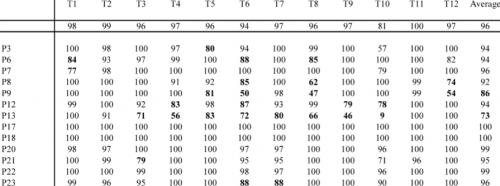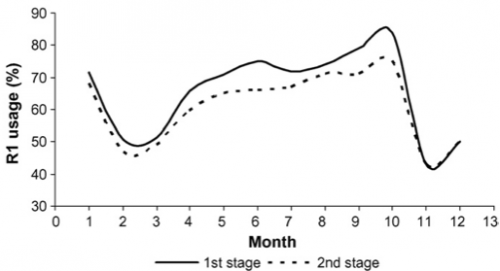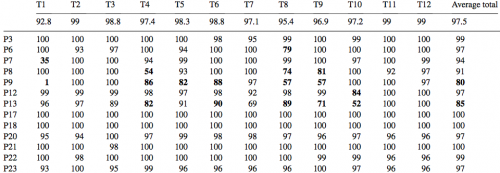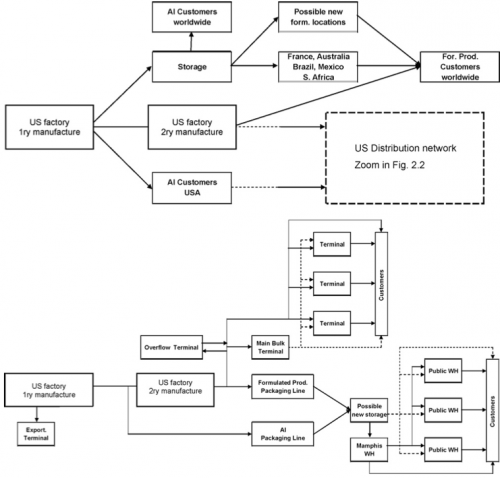Multi-level Supply Chain Design
The quantification of supply chain planning is the next step in the field of supply chain optimization. After operational and logistical aspects have been modeled and optimized, margins for further improvement remain slim.
Based on this premise the paper I review today suggests and tests several alternative multilevel planning approaches to gain further supply chain improvements by optimizing the mid-term supply chain design.
Case
The authors use a case of an agrochemical supply chain to establish their model and methods.
The problem can be stated as follows:
Product X (PX) is a chemical compound used as an active ingredient (AI) in several commercial herbicides. PY is chemically similar to PX, and its uses are nearly identical to those proposed for PX. They are produced by a multinational agrochemicals company.
The authors continue explaining why further optimization is dearly necessary.
A factor that has been putting enormous pressure on the low cost strategy for these products is the price of raw materials. The manufacturing methods are robust and very well established and do not leave any margin for improvement for cost cutting purposes, so the product management team turned to supply chain optimisation as a way of controlling and even reducing costs while improving service levels.
Model
Figure 1 highlights the supply chain structure of this case. The upper part shows a high-level overview, while the lower part displays the structure of the distribution network in the US.
Figure 1: Supply Chain Structure Chemical Industry (Sousa et al., 2008)
The authors employ a two-stage modelling approach to include different aspects of the planning process.
In the first stage we develop a high level planning model with a cyclic time horizon of one year (discretised into twelve months), including all the nodes in the US and worldwide networks as described above.
In the second stage, a detailed operational model is built for each month, with a time resolution of one day to assess the feasibility of the upper level plan at the operational level. […] The US manufacturing sites are described in detail and individual orders are considered.
The outputs are a detailed production and distribution plan for the US network, while accomplishing the export plan established in the first level. The second stage outputs also provide information on how to improve the accuracy of the upper level planning.
The authors then elaborate two mixed-integer linear programs tailored to the demands of the chemical industry. The short-term model is built in a way that environmental variables are used which have been set by the optimization in the mid-term model.
The results therefore can be interpreted as
The objective function of the mid-term and short-term models are the gross profits (NPV). The mid-term model also includes an additional penalty for unmet demand.
Results
For the first / base case figure 2 highlights the percentage of on time delivered products (P3, … P23). Bold numbers are below the 90% target value.

Figure 2: Deliveries on time and in full per Product and per Month for the unaligned Models (Sousa et al., 2008)
It must also be noted that the first stage and the second stage model do not quite fit together. The first stage model consistently projects a higher utilization rate than the second stage (figure 3).

Figure 3: Prediction of Resource Utilization by the first and second stage models (Sousa et al., 2008)
In a second case based on the above mentioned results the capacity of the bottle neck manufacturing sites are relieved. This leads to a slightly higher average percentage of global delivery, but on the other hand also to a lower sales figure for the US market.
Next a multi-level integration of the two different model stages is done. The goal is to use feedback from the second stage model already in the first stage.
Therefore the authors propose the following adjustments to the first stage model:
- A capacity correction factor, to adjust selected capacity levels based on learnings from the second stage.
- A (reduced) maximum utilization level for certain processes in the stage one model to prevent bottlenecks from happening.
- Introduction of a minimum demand coverage by inventory in the first stage model.
After these adjustments the congruence of the two stage models improves and the average on time delivery rises to 97.5 % (figure 4).

Figure 4: Case 3: Increased on time an in full Deliveries compared to Base Case (Sousa et al., 2008)
Conclusion
Multi-level planning is commonly used in research and practice. In businesses very often the planning departments for strategic, mid- and short-term planning are functionally separated. And therefore communication is slowed down.
This article highlights the importance of an integrated planning approach, because if the models are not aligned the end result cannot be optimal.
The authors therefore suggest approaches to adjust the mid-term planning model to the needs of the short-term one. Overall this has quite positive effects on the results of the SC network.
On the other hand the authors neglect to argue in another direction:
The ultimate goal should not be to use more or less subjective adjustment factors and trail-and-error to force the mid-term / first stage model in the right direction, but to integrate supply chain modeling altogether.
Only a fully integrated and comprehensive model can result in real optimization. Of course this would require a whole new, joint planning approach.
Sousa, R., Shah, N., & Papageorgiou, L.G. (2008). Supply chain design and multilevel planning—An industrial case Computers and Chemical Engineering, 32, 2643-2663









Add new comment